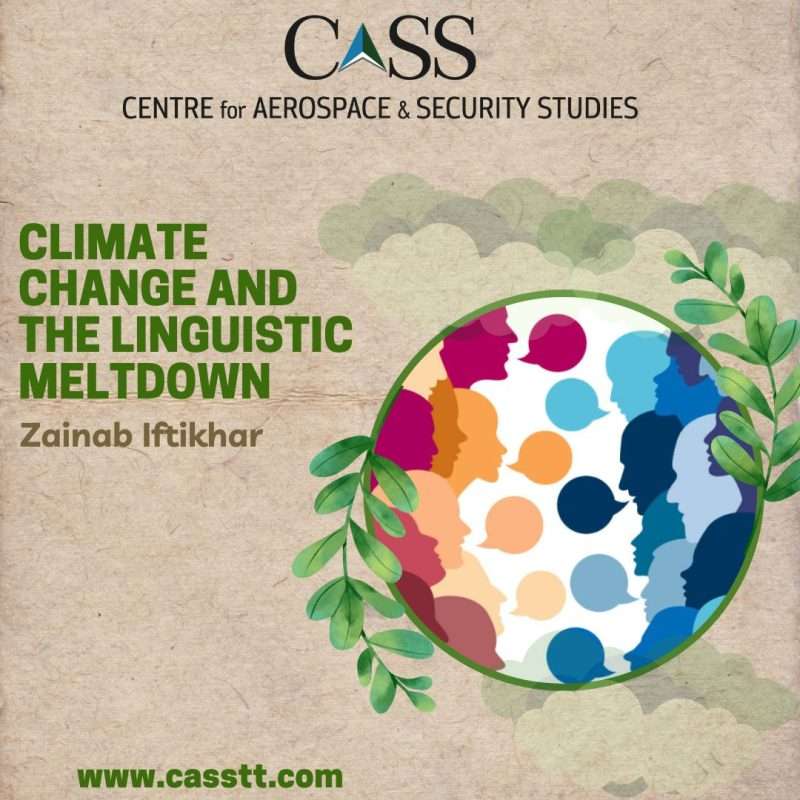Throughout human history, languages have woven stories, traditions, and identities for millennia. They are vessels of knowledge, carrying the wisdom of generations and providing a unique lens through which the world is perceived. Yet, as the monumental challenge of climate change grows, a lesser-known casualty emerges – the gradual erosion and extinction of languages. Languages and the environment are deeply intertwined, each influencing and enriching the other.
Indigenous languages, in particular, harbour linguistic nuances that encapsulate generations of keen observation and intimate interaction with nature. These dialects may hold specific terms capturing the essence of weather patterns, various flora and fauna, and even the minutiae of shifting landscapes. However, as the looming shadow of climate change intensifies, we begin to recognise a less publicised victim—the gradual erosion and eventual extinction of these precious languages.
Climate change does not solely manifest in temperature increases or changing weather patterns; it catalyzes a cascade of interconnected impacts, and one of the most profound is the displacement of communities. As sea levels rise and coastal areas become uninhabitable, when droughts make fertile lands barren, and when unpredictable weather disrupts the livelihood of people, communities are forced to leave their ancestral homes and become ‘Climate Refugees.’ Yet, this migration is not simply a geographical shift. Along with the evident challenges, it bears an insidious weight—threatening the very linguistic fabric of these migrating communities. Recent reports paint a dire picture, suggesting a language faces extinction every 40 days. Such statistics underscore the severity of the intertwined crises of environmental and linguistic degradation.
Climate refugees often settle in areas with different linguistic majorities. To integrate into their new communities, migrants prioritise learning the dominant language to access education, employment, and social services. As a result, their native languages take a back seat, leading to a decline in usage and proficiency. For instance, Karen McVeigh, a senior reporter for The Guardian, who has done work on disappearing languages, in an interview shared that Vanuatu in the South Pacific Islands has 110 languages marking the highest language density in the world. However, it is also among the regions most susceptible to climate change. So, if the rising waters forcibly uproot those people and they move to Indonesia or Australia, the younger generation is likely to gravitate toward the dominant language of the host community to secure better opportunities and integration.
Climate-induced migration is often a response to urgent threats to life and livelihoods. In such scenarios, the survival of individuals and families takes precedence over cultural preservation. Migrants may prioritise basic needs over sustaining their native languages, hastening the latter’s extinction process. According to the International Organization for Migration, by 2050, 25 million to 1 billion people are predicted to migrate as a result of climate change.
In the Arctic regions, for instance, the Inuktitut language of the Inuit people boasts a rich vocabulary for describing ice and snow conditions. Yet, the receding ice and changing landscapes are rendering these terms obsolete, eroding a vital aspect of cultural identity. Similar stories are unfolding in other regions as ecosystems morph, disrupting livelihoods and rendering once-relevant languages obsolete. For instance, South Asia, East Asia, and the Pacific have some of the most linguistically diverse countries that are particularly affected by environmental disasters. Hence, migrations as a consequence of these disasters can exacerbate the linguistic heritage in these regions.
In a similar realm, approximately 1,200 Austronesian languages and 840 Papuan languages are spoken in the Pacific, which makes it home to nearly a third of the world’s linguistic heritage. However, the Pacific confronts a new hazard that is peculiar in its nature: environmental degradation of atolls and islands, triggering migration and eventually the demise of language and culture.
Having discussed the significance of languages and the severity of their extinction, efforts to mitigate this crisis demand a two-pronged approach: the preservation of linguistic heritage and the support of climate-resilient communities. Recognising the intrinsic link between languages and environments, initiatives must be launched to record, document, and digitise endangered languages before they vanish into oblivion. Community members should be encouraged to record oral histories and traditional practices linked with their language. Digital archives or repositories to store recorded materials should be developed to ensure they are easily accessible for future generations and researchers. For example, the Torwali community has adopted an innovative, identity-focused approach in northern Pakistan, which serves as a commendable example of leveraging limited resources for simultaneous language, cultural, ecological and social empowerment. Bilingual education programmes that incorporate the local language alongside dominant languages in schools should be initiated to foster cultural identity, cognitive skills, and enhanced adaptability. Cultural and language centres in resettlement areas should be established to serve as community hubs for language preservation, traditional practices, and knowledge sharing.
Karen McVeigh calls global warming ‘the final nail in the coffin for more than half of humanity’s languages,’ and the response to this dual challenge demands a holistic, people-centric approach that addresses the pressing concerns of climate change and the vital task of safeguarding linguistic heritage. This can be a tiny step toward fostering cultural diversity, strengthening intergenerational bonds, and acknowledging the rightful place of indigenous wisdom in shaping our planet’s future.
Zainab Iftikhar is a Research Assistant at the Centre for Aerospace and Security Studies (CASS), Islamabad, Pakistan. She can be reached at [email protected]
Design Credit: Mysha Dua Salman





